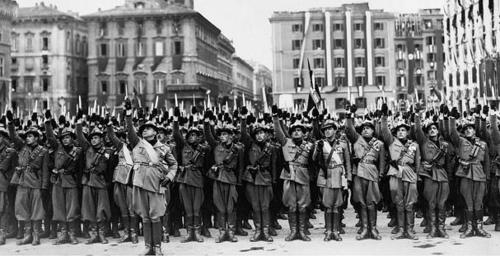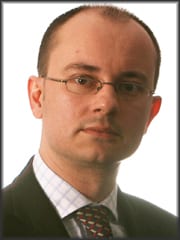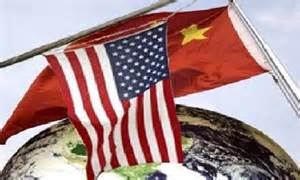Umberto Eco: Memories of Fascism and related (seductive) abominations
The New York Review of Books
(Originally June 22, 1995)
UR-FASCISM*
By Umberto Eco
Fascism in Italy was a rigid discombobulation, a structured confusion. Fascism was philosophically out of joint, but emotionally it was firmly fastened to some archetypal foundations.
II spent two of my early years among the SS, Fascists, Republicans, and partisans shooting at one another, and I learned how to dodge bullets. It was good exercise.
Il Duce among Blackshirts.
In May we heard that the war was over. Peace gave me a curious sensation. I had been told that permanent warfare was the normal condition for a young Italian. In the following months I discovered that the Resistance was not only a local phenomenon but a European one. I learned new, exciting words like réseau, maquis, armée secrète, Rote Kapelle, Warsaw ghetto. I saw the first photographs of the Holocaust, thus understanding the meaning before knowing the word. I realized what we were liberated from.
In my country today there are people who are wondering if the Resistance had a real military impact on the course of the war. For my generation this question is irrelevant: we immediately understood the moral and psychological meaning of the Resistance. For us it was a point of pride to know that we Europeans did not wait passively for liberation. And for the young Americans who were paying with their blood for our restored freedom it meant something to know that behind the firing lines there were Europeans paying their own debt in advance.
But who are They?
Nevertheless, even though political regimes can be overthrown, and ideologies can be criticized and disowned, behind a regime and its ideology there is always a way of thinking and feeling, a group of cultural habits, of obscure instincts and unfathomable drives. Is there still another ghost stalking Europe (not to speak of other parts of the world)?
Italian fascism was certainly a dictatorship, but it was not totally totalitarian, not because of its mildness but rather because of the philosophical weakness of its ideology. Contrary to common opinion, fascism in Italy had no special philosophy. The article on fascism signed by Mussolini in the Treccani Encyclopedia was written or basically inspired by Giovanni Gentile, but it reflected a late-Hegelian notion of the Absolute and Ethical State which was never fully realized by Mussolini. Mussolini did not have any philosophy: he had only rhetoric (and opportunism). He was a militant atheist at the beginning and later signed the Convention with the Church and welcomed the bishops who blessed the Fascist pennants. In his early anticlerical years, according to a likely legend, he once asked God, in order to prove His existence, to strike him down on the spot. Later, Mussolini always cited the name of God in his speeches, and did not mind being called the Man of Providence.
milizia, the grant of privileges to the Church with state education extolling violence, absolute state control with a free market? The Fascist Party was born boasting that it brought a revolutionary new order; but it was financed by the most conservative among the landowners who expected from it a counter-revolution. At its beginning fascism was republican. Yet it survived for twenty years proclaiming its loyalty to the royal family, while the Duce (the unchallenged Maximal Leader) was arm- in-arm with the King, to whom he also offered the title of Emperor. But when the King fired Mussolini in 1943, the party reappeared two months later, with German support, under the standard of a “social” republic, recycling its old revolutionary script, now enriched with almost Jacobin overtones.

D’Annunzio
During those twenty years, the poetry of Montale and other writers associated with the group called the Ermetici was a reaction to the bombastic style of the regime, and these poets were allowed to develop their literary protest from within what was seen as their ivory tower. The mood of the Ermetici poets was exactly the reverse of the fascist cult of optimism and heroism. The regime tolerated their blatant, even though socially imperceptible, dissent because the Fascists simply did not pay attention to such arcane language.
The contradictory picture I describe was not the result of tolerance but of political and ideological discombobulation. But it was a rigid discombobulation, a structured confusion. Fascism was philosophically out of joint, but emotionally it was firmly fastened to some archetypal foundations.
1234
abc bcd cde def
Fascism became an all-purpose term because one can eliminate from a fascist regime one or more features, and it will still be recognizable as fascist. Take away imperialism from fascism and you still have Franco and Salazar. Take away colonialism and you still have the Balkan fascism of the Ustashes. Add to the Italian fascism a radical anti-capitalism (which never much fascinated Mussolini) and you have Ezra Pound. Add a cult of Celtic mythology and the Grail mysticism (completely alien to official fascism) and you have one of the most respected fascist gurus, Julius Evola.
1. The first feature of Ur-Fascism is the cult of tradition. Traditionalism is of course much older than fascism. Not only was it typical of counter-revolutionary Catholic thought after the French revolution, but it was born in the late Hellenistic era, as a reaction to classical Greek rationalism. In the Mediterranean basin, people of different religions (most of them indulgently accepted by the Roman Pantheon) started dreaming of a revelation received at the dawn of human history. This revelation, according to the traditionalist mystique, had remained for a long time concealed under the veil of forgotten languages – in Egyptian hieroglyphs, in the Celtic runes, in the scrolls of the little known religions of Asia.
As a consequence, there can be no advancement of learning. Truth has been already spelled out once and for all, and we can only keep interpreting its obscure message.
One has only to look at the syllabus of every fascist movement to find the major traditionalist thinkers. The Nazi gnosis was nourished by traditionalist, syncretistic, occult elements. The most influential theoretical source of the theories of the new Italian right, Julius Evola, merged the Holy Grail with The Protocols of the Elders of Zion, alchemy with the Holy Roman and Germanic Empire. The very fact that the Italian right, in order to show its open-mindedness, recently broadened its syllabus to include works by De Maistre, Guenon, and Gramsci, is a blatant proof of syncretism.
If you browse in the shelves that, in American bookstores, are labeled as New Age, you can find there even Saint Augustine who, as far as I know, was not a fascist. But combining Saint Augustine and Stonehenge – that is a symptom of Ur-Fascism.
2. Traditionalism implies the rejection of modernism. Both Fascists and Nazis worshiped technology, while traditionalist thinkers usually reject it as a negation of traditional spiritual values. However, even though Nazism was proud of its industrial achievements, its praise of modernism was only the surface of an ideology based upon Blood and Earth (Blut und Boden). The rejection of the modern world was disguised as a rebuttal of the capitalistic way of life, but it mainly concerned the rejection of the Spirit of 1789 (and of 1776, of course). The Enlightenment, the Age of Reason, is seen as the beginning of modern depravity. In this sense Ur-Fascism can be defined as irrationalism.
3. Irrationalism also depends on the cult of action for action’s sake. Action being beautiful in itself, it must be taken before, or without, any previous reflection. Thinking is a form of emasculation. Therefore culture is suspect insofar as it is identified with critical attitudes. Distrust of the intellectual world has always been a symptom of Ur-Fascism, from Goering’s alleged statement (“When I hear talk of culture I reach for my gun”) to the frequent use of such expressions as “degenerate intellectuals,” “eggheads,” “effete snobs,” “universities are a nest of reds.” The official Fascist intellectuals were mainly engaged in attacking modern culture and the liberal intelligentsia for having betrayed traditional values.
4. No syncretistic faith can withstand analytical criticism. The critical spirit makes distinctions, and to distinguish is a sign of modernism. In modern culture the scientific community praises disagreement as a way to improve knowledge. For Ur-Fascism, disagreement is treason.
5. Besides, disagreement is a sign of diversity. Ur-Fascism grows up and seeks for consensus by exploiting and exacerbating the natural fear of difference. The first appeal of a fascist or prematurely fascist movement is an appeal against the intruders. Thus Ur- Fascism is racist by definition.
6. Ur-Fascism derives from individual or social frustration. That is why one of the most typical features of the historical fascism was the appeal to a frustrated middle class, a class suffering from an economic crisis or feelings of political humiliation, and frightened by the pressure of lower social groups. In our time, when the old “proletarians” are becoming petty bourgeois (and the lumpen are largely excluded from the political scene), the fascism of tomorrow will find its audience in this new majority.
7. To people who feel deprived of a clear social identity, Ur-Fascism says that their only privilege is the most common one, to be born in the same country. This is the origin of nationalism. Besides, the only ones who can provide an identity to the nation are its enemies. Thus at the root of the Ur-Fascist psychology there is the obsession with a plot, possibly an international one. The followers must feel besieged. The easiest way to solve the plot is the appeal to xenophobia. But the plot must also come from the inside: Jews are usually the best target because they have the advantage of being at the same time inside and outside. In the U.S., a prominent instance of the plot obsession is to be found in Pat Robertson’s The New World Order, but, as we have recently seen, there are many others.
8. The followers must feel humiliated by the ostentatious wealth and force of their enemies. When I was a boy I was taught to think of Englishmen as the five-meal people. They ate more frequently than the poor but sober Italians. Jews are rich and help each other through a secret web of mutual assistance. However, the followers must be convinced that they can overwhelm the enemies. Thus, by a continuous shifting of rhetorical focus, the enemies are at the same time too strong and too weak. Fascist governments are condemned to lose wars because they are constitutionally incapable of objectively evaluating the force of the enemy.
9. For Ur-Fascism there is no struggle for life but, rather, life is lived for struggle. Thus pacifism is trafficking with the enemy. It is bad because life is permanent warfare. This, however, brings about an Armageddon complex. Since enemies have to be defeated, there must be a final battle, after which the movement will have control of the world. But such a “final solution” implies a further era of peace, a Golden Age, which contradicts the principle of permanent war. No fascist leader has ever succeeded in solving this predicament.
10. Elitism is a typical aspect of any reactionary ideology, insofar as it is fundamentally aristocratic, and aristocratic and militaristic elitism cruelly implies contempt for the weak. Ur-Fascism can only advocate a popular elitism. Every citizen belongs to the best people of the world, the members of the party are the best among the citizens, every citizen can (or ought to) become a member of the party. But there cannot be patricians without plebeians. In fact, the Leader, knowing that his power was not delegated to him democratically but was conquered by force, also knows that his force is based upon the weakness of the masses; they are so weak as to need and deserve a ruler. Since the group is hierarchically organized (according to a military model), every subordinate leader despises his own underlings, and each of them despises his inferiors. This reinforces the sense of mass elitism.
11. In such a perspective everybody is educated to become a hero. In every mythology the hero is an exceptional being, but in Ur-Fascist ideology, heroism is the norm. This cult of heroism is strictly linked with the cult of death. It is not by chance that a motto of the Falangists was Viva la Muerte (in English it should be translated as “Long Live Death!”). In non-fascist societies, the lay public is told that death is unpleasant but must be faced with dignity; believers are told that it is the painful way to reach a supernatural happiness. By contrast, the Ur-Fascist hero craves heroic death, advertised as the best reward for a heroic life. The Ur-Fascist hero is impatient to die. In his impatience, he more frequently sends other people to death.
12. Since both permanent war and heroism are difficult games to play, the Ur-Fascist transfers his will to power to sexual matters. This is the origin of machismo (which implies both disdain for women and intolerance and condemnation of nonstandard sexual habits, from chastity to homosexuality). Since even sex is a difficult game to play, the Ur- Fascist hero tends to play with weapons – doing so becomes an ersatz phallic exercise.
13. Ur-Fascism is based upon a selective populism, a qualitative populism, one might say. In a democracy, the citizens have individual rights, but the citizens in their entirety have a political impact only from a quantitative point of view – one follows the decisions of the majority. For Ur-Fascism, however, individuals as individuals have no rights, and the People is conceived as a quality, a monolithic entity expressing the Common Will. Since no large quantity of human beings can have a common will, the Leader pretends to be their interpreter. Having lost their power of delegation, citizens do not act; they are only called on to play the role of the People. Thus the People is only a theatrical fiction. To have a good instance of qualitative populism we no longer need the Piazza Venezia in Rome or the Nuremberg Stadium. There is in our future a TV or Internet populism, in which the emotional response of a selected group of citizens can be presented and accepted as the Voice of the People.
14. Ur-Fascism speaks Newspeak. Newspeak was invented by Orwell, in 1984, as the official language of Ingsoc, English Socialism. But elements of Ur-Fascism are common to different forms of dictatorship. All the Nazi or Fascist schoolbooks made use of an impoverished vocabulary, and an elementary syntax, in order to limit the instruments for complex and critical reasoning. But we must be ready to identify other kinds of Newspeak, even if they take the apparently innocent form of a popular talk show.
Until then, I had believed that there was a single party in every country and that in Italy it was the Partito Nazionale Fascista. Now I was discovering that in my country several parties could exist at the same time. Since I was a clever boy, I immediately realized that so many parties could not have been born overnight, and they must have existed for some time as clandestine organizations.
“I venture the challenging statement that if American democracy ceases to move forward as a living force, seeking day and night by peaceful means to better the lot of our citizens, fascism will grow in strength in our land.”
Freedom and liberation are an unending task. Let me finish with a poem by Franco Fortini:
Sulla spalletta del ponte Le teste degli impiccati Nell’acqua della fonte La bava degli impiccati.
Sul lastrico del mercato Le unghie dei fucilati Sull’erba secca del prato I denti dei fucilati.
Mordere l’aria mordere i sassi
La nostra carne non è più d’uomini Mordere l’aria mordere i sassi
Il nostro cuore non è più d’uomini.
Ma noi s’è letto negli occhi dei morti E sulla terra faremo libertà
Ma l’hanno stretta i pugni dei morti La giustizia che si farà.
(On the bridge’s parapet The heads of the hanged In the flowing rivulet
The spittle of the hanged.
On the cobbles in the market-places
The fingernails of those lined up and shot On the dry grass in the open spaces
The broken teeth of those lined up and shot.
Biting the air, biting the stones Our flesh is no longer human Biting the air, biting the stones Our hearts are no longer human.
But we have read into the eyes of the dead And shall bring freedom on the earth
But clenched tight in the fists of the dead Lies the justice to be served.)
– poem translated by Stephen Sartarelli ***
ABOUT THE AUTHOR
 Umberto Eco, OMRI (Italian: [umˈbɛrto ˈɛko]; born 5 January 1932) is an Italian semiotician, essayist,philosopher, literary critic, and novelist. He is best known for his groundbreaking 1980 historical mystery novel Il nome della rosa (The Name of the Rose), an intellectual mystery combining semiotics in fiction,biblical analysis, medieval studies and literary theory.
Umberto Eco, OMRI (Italian: [umˈbɛrto ˈɛko]; born 5 January 1932) is an Italian semiotician, essayist,philosopher, literary critic, and novelist. He is best known for his groundbreaking 1980 historical mystery novel Il nome della rosa (The Name of the Rose), an intellectual mystery combining semiotics in fiction,biblical analysis, medieval studies and literary theory.
_______________
http://www.nybooks.com/articles/1856
* This essay incorporates Eternal Fascism: Fourteen Ways of Looking at a Blackshirt





